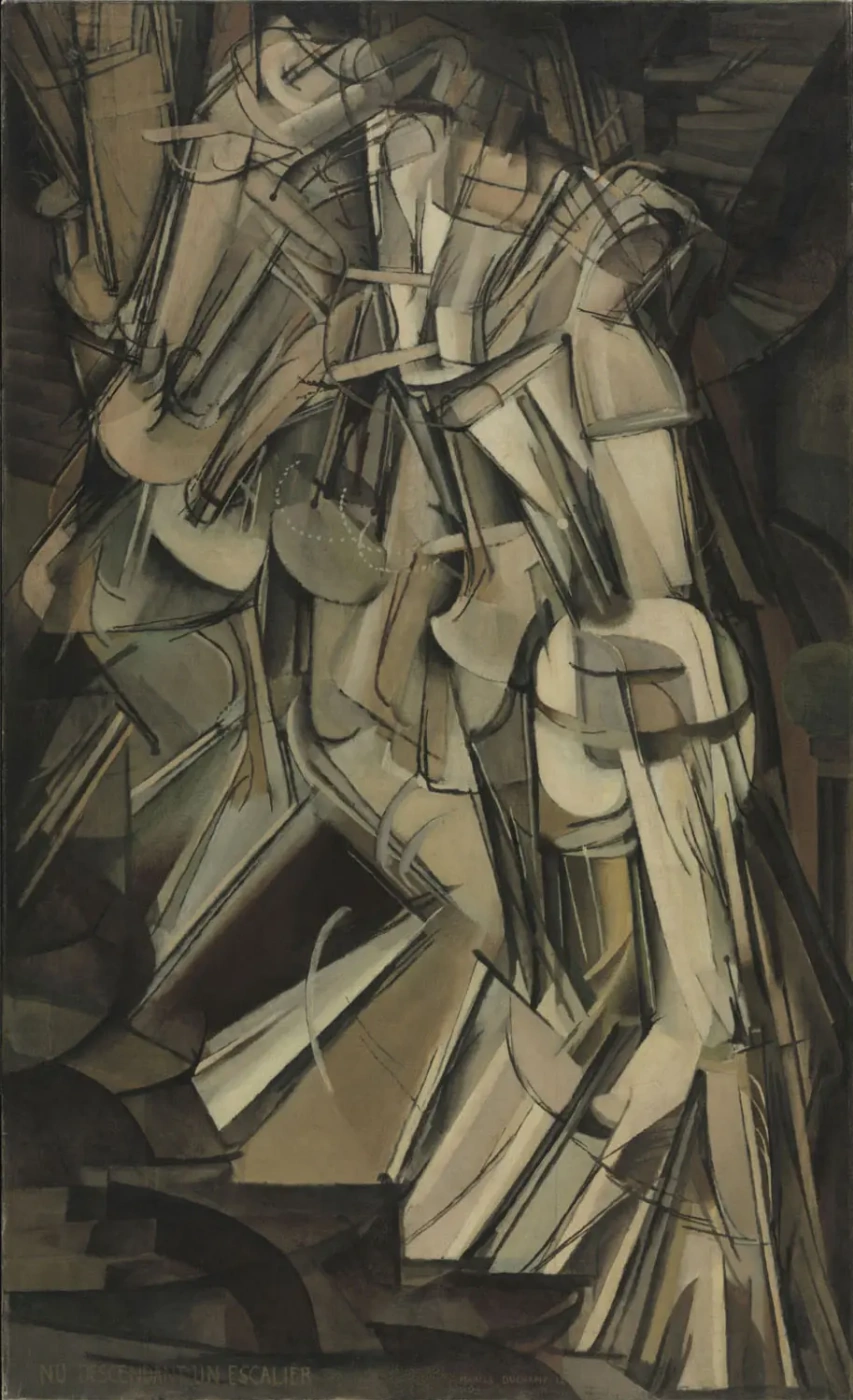log in
Enter site
Login to use Arthive functionality to the maximum
Nude going down the stairs
Marcel Duchamp • Malerei, 1912, 147×89.2 cm


















Bildbeschreibung «Nude going down the stairs»
"Nude, descending the stairs", written in 1912, according to art historians, was not the most outstanding work of Marcel Duchamp. However, not so much exists in the world of works of art that would cause so much controversy, criticism and discussion among contemporaries. It is interesting that the “Nude” existed as if by itself: despite the scandalous fame of the canvas, it was little mentioned in conjunction with the name of the author. And even though after the first exhibitions about this picture did not say only the lazy, she did not bring special popularity to Marcel Duchamp himself.
In March 1912, Duchamp presented “Nude” at the exhibition of the Salon of Independent. Soon after, the artist was unexpectedly visited by older brothers - Jacques Villon and Raymond Duchamp-Villon. They handed Marcel an urgent request on behalf of the Salon’s committee (of which they were both members) to withdraw work from the exhibition or rename it. The committee justified its refusal to show the picture by saying that "the nude should not go down the stairs, it should lie." Later, Duchamp recalled that he did not answer the brothers, but immediately took a taxi and personally removed the canvas from the wall. His relationship with relatives after this unpleasant story has not improved.
Whatever it was, in the fall of the same year, “Nude, descending the stairs” was nevertheless presented to the public at the exhibition of the Puteau Group, a creative association of Cubist artists. And already in 1913, the canvas made a lot of noise overseas, at the International Exhibition of Contemporary Art in New York. The conservative American public, accustomed to the classic, idealized images of nudity, turned out to be completely unprepared for Duchamp's “mechanical” mosaic work. The New York Times dubbed the painting "The Explosion at the Tile Factory", and Theodore Roosevelt compared it to the Navajo Indian rug. But despite the criticism that fell on the canvas, it was her scandalous reputation that attracted over 87 thousand visitors to the exhibition.
"Nude, descending the stairs" was sold for the ridiculous price of $ 324, of which Duchamp received 240. The canvas was purchased by San Francisco dealer Frederick Torrey. However, a few years later he was stranded and was forced to sell the painting to a collector and a friend of Duchamp Walter Konrad Arensberg, who bequeathed his collection to the Philadelphia Museum of Art.
Author: Evgenia Sidelnikova
In March 1912, Duchamp presented “Nude” at the exhibition of the Salon of Independent. Soon after, the artist was unexpectedly visited by older brothers - Jacques Villon and Raymond Duchamp-Villon. They handed Marcel an urgent request on behalf of the Salon’s committee (of which they were both members) to withdraw work from the exhibition or rename it. The committee justified its refusal to show the picture by saying that "the nude should not go down the stairs, it should lie." Later, Duchamp recalled that he did not answer the brothers, but immediately took a taxi and personally removed the canvas from the wall. His relationship with relatives after this unpleasant story has not improved.
Whatever it was, in the fall of the same year, “Nude, descending the stairs” was nevertheless presented to the public at the exhibition of the Puteau Group, a creative association of Cubist artists. And already in 1913, the canvas made a lot of noise overseas, at the International Exhibition of Contemporary Art in New York. The conservative American public, accustomed to the classic, idealized images of nudity, turned out to be completely unprepared for Duchamp's “mechanical” mosaic work. The New York Times dubbed the painting "The Explosion at the Tile Factory", and Theodore Roosevelt compared it to the Navajo Indian rug. But despite the criticism that fell on the canvas, it was her scandalous reputation that attracted over 87 thousand visitors to the exhibition.
"Nude, descending the stairs" was sold for the ridiculous price of $ 324, of which Duchamp received 240. The canvas was purchased by San Francisco dealer Frederick Torrey. However, a few years later he was stranded and was forced to sell the painting to a collector and a friend of Duchamp Walter Konrad Arensberg, who bequeathed his collection to the Philadelphia Museum of Art.
Author: Evgenia Sidelnikova
Veröffentlichungen zum Kunstwerk




